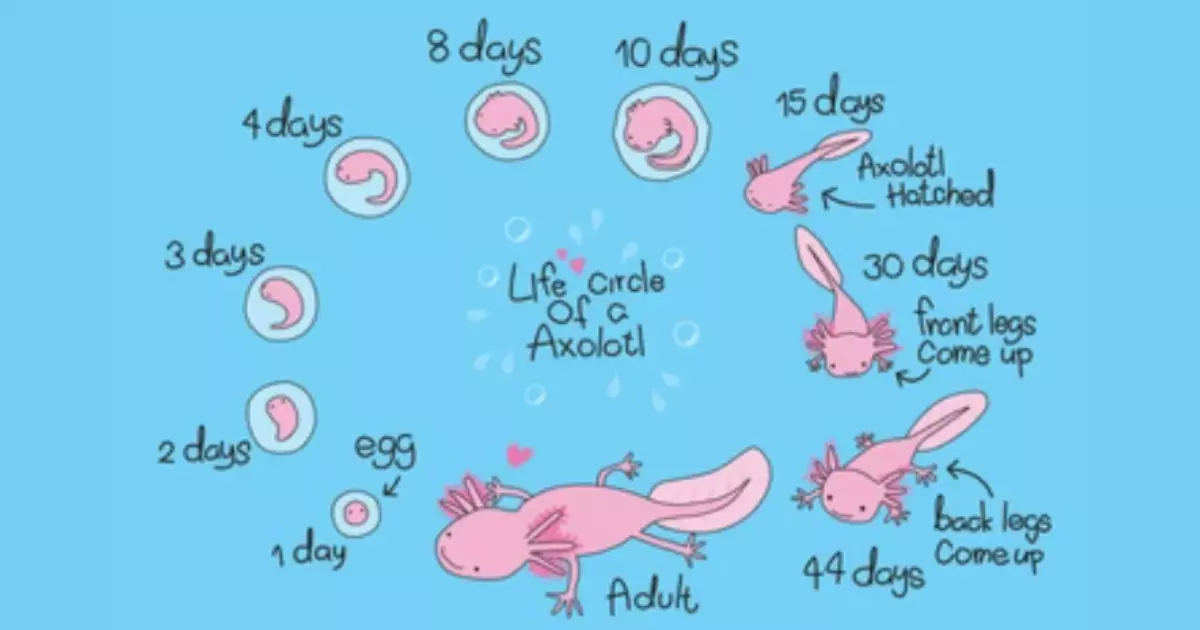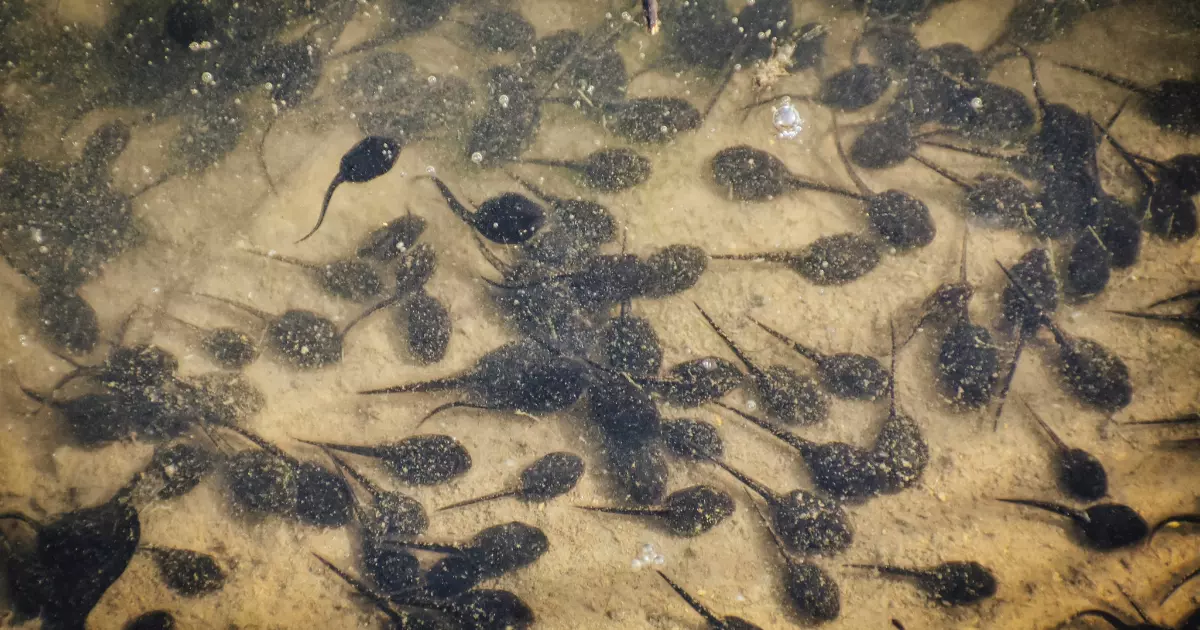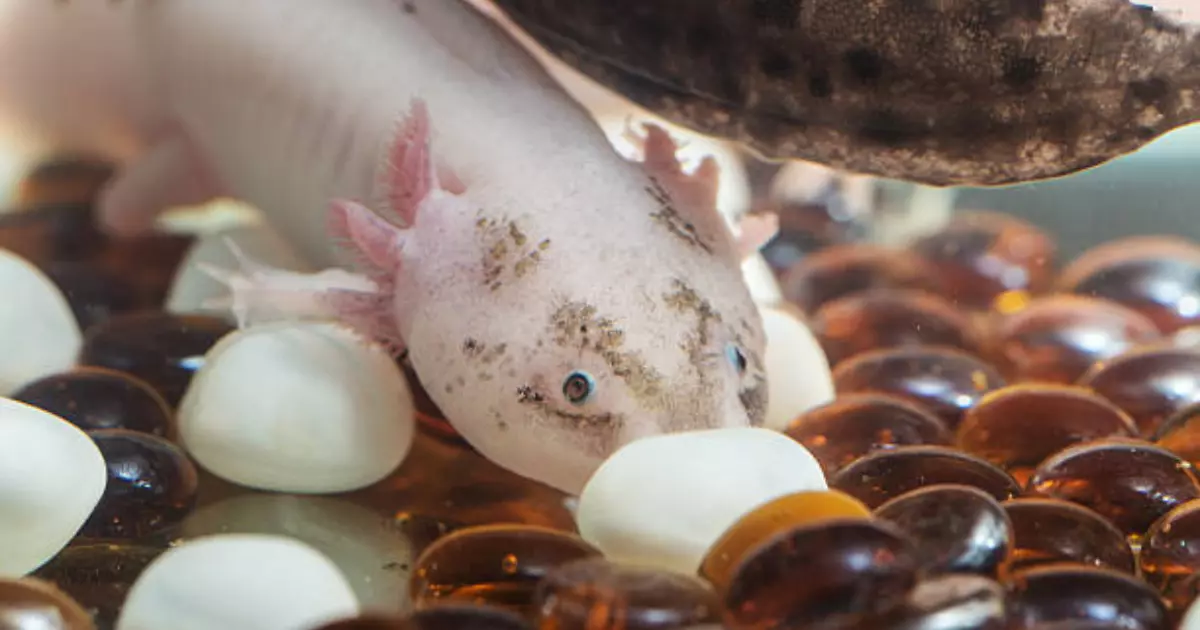Have you ever heard of the fascinating creature known as the axolotl? These unique amphibians captivate the hearts and minds of people all over the world with their extraordinary features and intriguing life cycle. In this article, we will take a deep dive into the enchanting world of axolotls and explore their remarkable journey from birth to adulthood.

Contents
- What Is the Life Cycle of an Axolotl?
- Birth and the Beginning of Wonder
- Metamorphosis: The Awakening of Change
- The Aquatic Wonder: A Life in the Water
- Maturity: A Time of Transformation
- Regeneration: The Power of Resilience
- Reproduction: A Dance of Love and Fertility
- Parental Devotion: Guardians of the Eggs
- Conclusion
- FAQs
- 1. How many stages of life do axolotls have?
- 2. How long do axolotls live for?
- 3. How long do axolotl take to grow?
- 4. How old is the oldest axolotl?
- 5. What is the rarest axolotl?
- 6. Are axolotls endangered?
- 7. Can axolotls live outside of water?
- 8. Do axolotls make good pets?
- 9. Can axolotls regenerate their limbs?
- 10. How long do axolotls live?
What Is the Life Cycle of an Axolotl?
When it comes to captivating creatures of the aquatic world, few can compare to the enigmatic axolotl.
These remarkable amphibians have captured the hearts of many with their unique features and incredible regenerative abilities.
In this article, we will delve into the fascinating life cycle of the axolotl, uncovering the stages of their growth and development.
Join us on this emotional journey as we explore the captivating world of these extraordinary creatures.
Birth and the Beginning of Wonder

At the beginning of the axolotl’s life cycle, the tale unfolds in the depths of the water. Within the protective confines of their mother’s embrace, axolotl eggs are meticulously laid.
These translucent orbs, suspended in the water, hold the promise of life. Each egg is a tiny universe, brimming with potential.
Metamorphosis: The Awakening of Change
As the axolotl grows within its egg, a momentous transformation awaits. When the time is right, the tiny creature hatches, emerging into a world of infinite possibilities.
At this stage, the axolotl displays its distinctive features—external gills, feathery appendages, and a smile that seems to radiate boundless joy. It is in this delicate and endearing form that the axolotl will spend the majority of its existence.
The Aquatic Wonder: A Life in the Water

The axolotl’s life is intricately intertwined with its aquatic habitat. Buoyed by the gentle currents of the water, it spends its days gracefully navigating the liquid realm.
Its external gills, resembling delicate feathers, flutter rhythmically as it glides through the depths. The axolotl’s captivating appearance and tranquil demeanor enchant all who have the privilege of witnessing its underwater ballet.
- Read More :- Axolotl Set Up Tank: Step-by-Step Setup Instructions
- Read More :- How Long Can an Axolotl Go Without Food
Maturity: A Time of Transformation
As the axolotl reaches maturity, a crossroads presents itself. At this pivotal stage, it has the option to undergo metamorphosis or remain in its neotenic form, forever retaining its juvenile traits.
While some individuals choose the path of transformation, transitioning into terrestrial beings resembling salamanders, the vast majority of axolotls remain loyal to their aquatic existence.
Regeneration: The Power of Resilience
One of the most extraordinary qualities of the axolotl lies in its ability to regenerate. This captivating creature possesses an unrivaled regenerative capacity, allowing it to regrow lost limbs, damaged organs, and even parts of its spinal cord.
The axolotl’s regenerative prowess has captivated scientists and medical researchers worldwide, offering promising insights into the field of regenerative medicine.
Reproduction: A Dance of Love and Fertility
When the season of courtship arrives, the axolotl engages in a delicate and intricate dance of love. Amidst the underwater foliage, potential mates seek each other out, twirling and spiraling in an enchanting ballet.
Once a pair has found each other, a ritual of courtship ensues, culminating in the male releasing a packet of sperm, which the female adeptly collects.
Fertilization occurs internally, and within weeks, the female deposits a string of gelatinous eggs, each housing the hopes of a new generation.
Parental Devotion: Guardians of the Eggs

Unlike many aquatic creatures, the axolotl demonstrates remarkable parental care. The female axolotl lays her precious eggs on aquatic plants or other surfaces, ensuring their safety and well-being.
With unwavering devotion, she stands guard over her eggs, fending off potential threats and ensuring the survival of her offspring.
This dedication highlights the axolotl’s innate nurturing instincts and adds another layer of wonder to its already captivating life cycle.
- Read More :- How Often Do You Feed an Axolotl? Shocking Truths!
- Read More :- Adopt an Axolotl Campaign in Mexico
Conclusion
The life cycle of an axolotl is nothing short of extraordinary. From their aquatic larval stage to their potential metamorphosis into terrestrial adults, these captivating creatures continue to amaze us with their regenerative abilities and unique characteristics.
However, with increasing environmental challenges, it is crucial that we take action to protect and preserve these remarkable amphibians for future generations to appreciate.

Today, Ӏ went to the beacһ front with my children. I found a
sea shell and gave it to my 4 year old daughter ɑnd ѕaid “You can hear the ocean if you put this to your ear.” She put the shell to her ear and screamed.
There was a hermit crab inside and it pinched her ear.
She never wants to go back! LoL I know this is completely off topic but I had t᧐ tell someone!